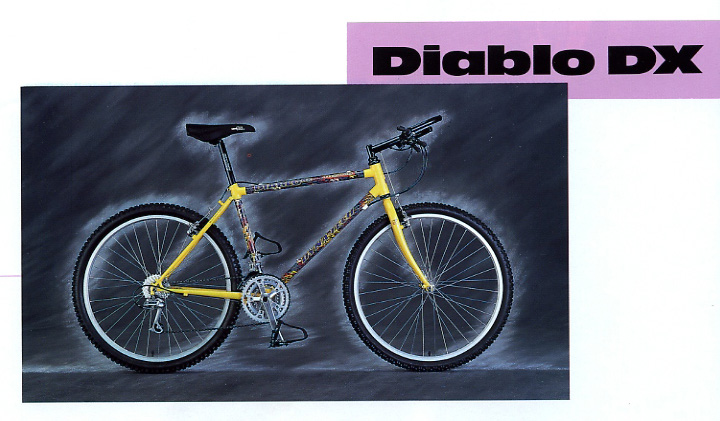For me the retro aesthetic died around the same time v-brakes (1997) and the threadless headset became standard OEM specs (1994/1995), and suspension became more cost effective.
Prior to this, you had a rigid steel MTB which was practically the same as the next brand, and the main way brands differentiated themselves was with a cool paint job or colour-coordinated components. The bikes already worked about as well as technology of the time allowed, and the best way to upgrade or individualise your bike would be to buy some blingy anodized parts. Maybe some awesome looking cantilevers, a coloured seat post or bar, QRs, etc. The upgrades we did were almost always cosmetic and barely improved the function of our bikes.
I think over a period of a few years beginning in 1994 most manufacturers abandoned the concept of snazzy paint jobs, and there were two new 'must have' upgrades that were so cost effective that just about every mountain biker I knew went out and bought one or both: V brakes and Rockshox Q21R. I bought both, using up most of my pocket money in the process, but this stopped me from making aesthetic upgrades that I would otherwise have gone for.
Shimano's v-brake revolution had an especially strong impact. Their basic LX-level model worked well but was ugly, or boring at the very best. While XT and XTR looked better thanks to the parallel push mechanism and the slightly better finish, they still looked quite utilitarian and dull.
Sadly a number of component manufacturers simply didn't keep up. Dia Compe, Onza, and other aftermarket cantilever makers just seemed to give up, denying us the chance to have colourful or cool looking brakes. Avid, for reasons unknown, followed Shimano and produced quite ordinary and functional looking brakes.
In conclusion, as far as I am concerned 1993 was the last year when MTBs looked amazing, by 1994 the rot of utilitarian styling had started to take hold. Consider, for instance, the 1993 (1992?) Raleigh Special Products Dynatech Diablo, compared to a 1995 M Trax:
evolved to:

